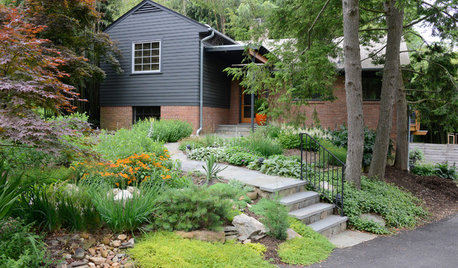Need I.D.
cannafreak
19 years ago
Related Stories

MORE ROOMSRooms I'd Like to See Wrapped Up as Gifts for the Holidays!
What Room Do You Have on Your Gift List This Year?
Full Story
FUN HOUZZEverything I Need to Know About Decorating I Learned from Downton Abbey
Mind your manors with these 10 decorating tips from the PBS series, returning on January 5
Full Story
INSIDE HOUZZInside Houzz: Updates to the Houzz App for iPhone and iPad
With a redesign and new features, the Houzz app is better than ever
Full Story
WORKING WITH AN ARCHITECTWho Needs 3D Design? 5 Reasons You Do
Whether you're remodeling or building new, 3D renderings can help you save money and get exactly what you want on your home project
Full Story
HOME OFFICESDream Spaces: Home Offices You’d Be Delighted to Work In
Warm lighting, comfortable furnishings and pleasing views can make you want to head into your home office each day
Full Story
LIFEYou Said It: ‘Just Because I’m Tiny Doesn’t Mean I Don’t Go Big’
Changing things up with space, color and paint dominated the design conversations this week
Full Story
BEFORE AND AFTERSJumbled Style Goes Vintage Chic in a D.C. Bathroom Makeover
Sloppy on the outside and alarming on the inside, this row house bathroom now sports a clean new look and systems that work
Full Story
RANCH HOMESHouzz Tour: An Eclectic Ranch Revival in Washington, D.C.
Well-considered renovations, clever art and treasures from family make their mark on an architect’s never-ending work in progress
Full Story
ECLECTIC HOMESHouzz Tour: A Manor Near D.C. Goes From Suburban Modern to Georgian
Newly enclosed spaces and traditional details join eye-popping murals to give a 2002 home some European gravitas
Full Story
DECORATING GUIDESThe Dumbest Decorating Decisions I’ve Ever Made
Caution: Do not try these at home
Full StorySponsored


cactusfreak
TimChapman
Related Professionals
Rancho Palos Verdes Landscape Architects & Landscape Designers · Maple Heights Landscape Architects & Landscape Designers · Brownsville Landscape Contractors · Cockeysville Landscape Contractors · Dallas Landscape Contractors · Forest Hills Landscape Contractors · Lebanon Landscape Contractors · North Potomac Landscape Contractors · Ponte Vedra Beach Landscape Contractors · Rockville Landscape Contractors · Twin Falls Landscape Contractors · Goldenrod Landscape Contractors · Elgin Roofing & Gutters · New Lenox Roofing & Gutters · West Chester Roofing & GuttersMantisia
TimChapman
cactusfreak
Mantisia
TimChapman